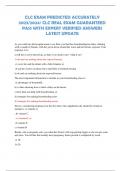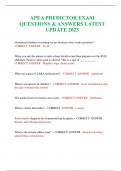Samenvatting
Big Data Summary
- Instelling
- Tilburg University (UVT)
The document provides a summary for the course of Big Data, containing the seven lectures covered, more precisely: Lecture 1: Introduction + Parallel Computing Lecture 2: Map-Reduce and the New Software Stack Lecture 3: Map-Reduce (continued) and Spark Lecture 4: Mining Data Streams (part 1) ...
[Meer zien]










